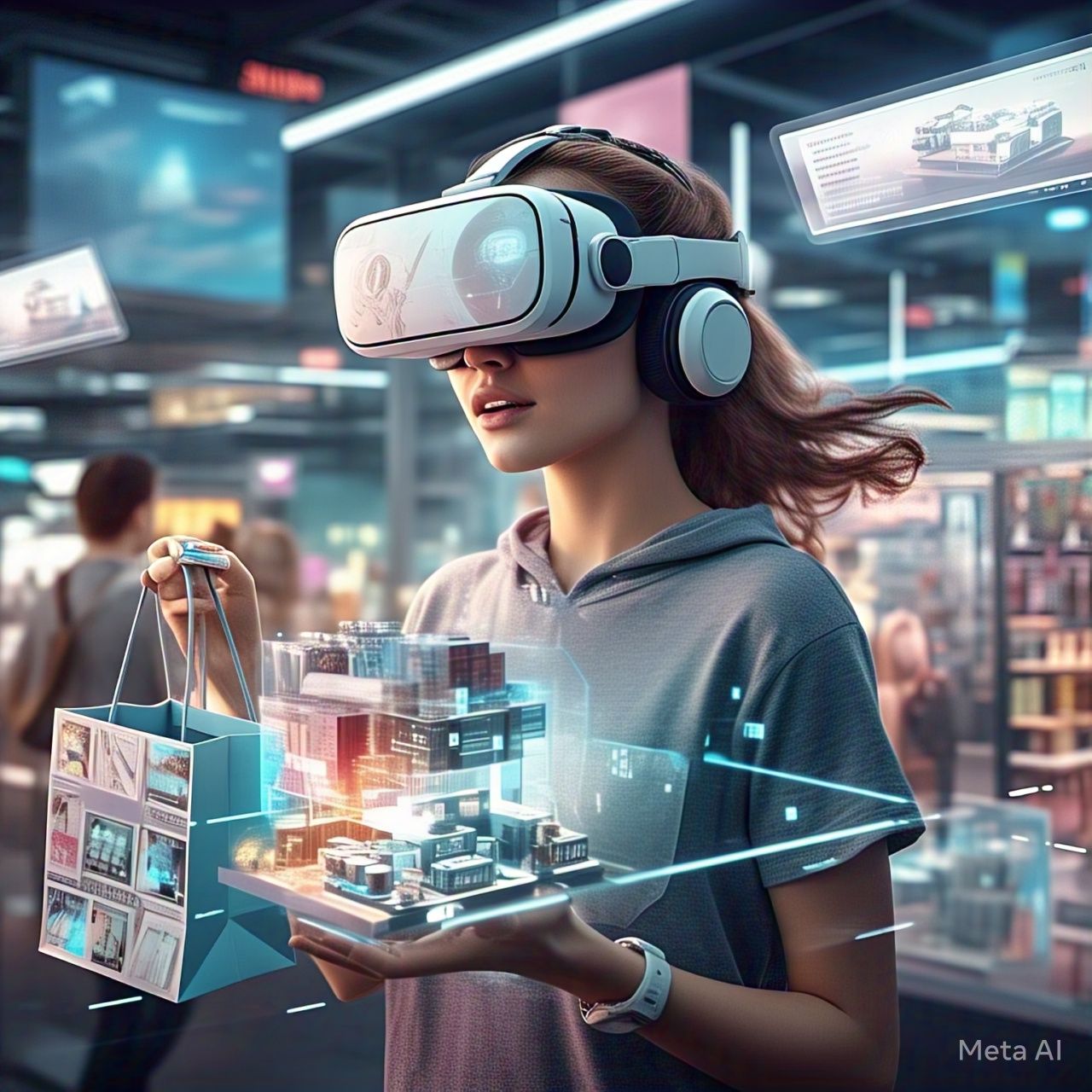The way people shop is undergoing a massive transformation, thanks to social commerce—the intersection of social media and e-commerce. With platforms like Instagram, TikTok, Facebook, and Pinterest integrating shopping features, social media is no longer just for connecting with friends; it’s becoming a powerful digital storefront where consumers discover, browse, and purchase products seamlessly.
But what does the future hold for social commerce? As artificial intelligence (AI), augmented reality (AR), and influencer marketing evolve, social commerce is set to reshape the retail industry in ways we’ve never seen before.
In this in-depth guide, we’ll explore:
- What social commerce is and why it’s growing
- The impact of AI, AR, and live shopping
- How social commerce is changing consumer behavior
- Challenges and opportunities for brands
- Predictions for the future of social shopping
What is Social Commerce?
Social commerce refers to buying and selling products directly within social media platforms, without needing to visit an external website or e-commerce store. It’s an interactive, seamless, and engaging way to shop, allowing users to:
✅ Browse products from brands they follow
✅ Watch live shopping events hosted by influencers
✅ Use AI-powered recommendations for personalized shopping
✅ Try products virtually using AR filters
✅ Complete purchases instantly within apps
Why is Social Commerce Growing?
📊 Key Statistics:
81% of consumers research products on social media before buying.
60% of Gen Z shoppers prefer buying directly through social media.
TikTok users are 1.7x more likely to purchase products discovered on the platform.
Social commerce sales are expected to reach $1.2 trillion by 2025.
The growth of social commerce is driven by consumer habits, mobile shopping, influencer marketing, and advanced AI-powered algorithms that personalize content.
How Social Commerce is Transforming Online Shopping
1. AI & Personalized Shopping Experiences
Artificial intelligence (AI) is playing a crucial role in enhancing social commerce by delivering highly personalized shopping experiences.
🔹 AI-powered recommendations: Social media algorithms analyze user behavior and show products tailored to their preferences.
🔹 Chatbots & Virtual Assistants: AI-driven chatbots provide instant responses to product inquiries and customer support.
🔹 Predictive Shopping: AI predicts what consumers might want to buy based on browsing history.
💡 Example:
Instagram Shopping recommends products based on what users have liked, shared, and saved.
TikTok’s “For You” page suggests trending products based on user interests.
2. Augmented Reality (AR) & Virtual Try-Ons
Augmented Reality (AR) is making online shopping more immersive and interactive, allowing users to try products before buying.
🔹 AR Beauty Filters: Try on makeup, hair colors, or skincare virtually (e.g., Sephora’s AR beauty try-on).
🔹 Furniture & Home Decor AR: Place furniture in your home using AR (e.g., IKEA Place app).
🔹 Fashion Try-Ons: Virtual fitting rooms for clothing, shoes, and accessories.
💡 Example:
Snapchat’s AR Lenses allow users to try on sunglasses, makeup, and clothes before purchasing.
Nike’s AR app scans feet to recommend the perfect shoe size.
3. Live Shopping & Influencer Marketing
Live shopping is one of the fastest-growing trends in social commerce, combining real-time video streaming with instant purchases.
🔹 Influencers showcase products live and answer audience questions.
🔹 Users can buy instantly through in-app links.
🔹 Brands create urgency with limited-time deals.
💡 Example:
TikTok Shop Live: Influencers host live product demos, leading to instant sales.
Facebook & Instagram Live Shopping: Brands showcase new collections and drive real-time engagement.
📊 Live commerce sales in China are expected to reach $700 billion by 2026, and the trend is expanding globally.
4. Shoppable Posts & One-Click Purchases
Social media is removing friction from the buying process with shoppable posts and instant checkout features.
✅ Instagram Shops: Users can browse and purchase directly within the app.
✅ Pinterest Buyable Pins: Allows users to buy products without leaving Pinterest.
✅ Facebook Marketplace: A social-driven shopping experience for local and global sellers.
💡 Example:
Shopify & TikTok Integration: Brands can link their Shopify store directly to TikTok, enabling one-click purchases.
How Social Commerce is Changing Consumer Behavior
📌 1. Shopping is More Social & Interactive
Consumers now rely on peer reviews, influencer recommendations, and real-time interactions before making a purchase.
📌 2. Instant Gratification & Impulse Buying
Social media’s seamless shopping experience encourages spontaneous purchases with fewer barriers.
📌 3. Brands Must Be Engaging, Not Just Selling
Shoppers prefer authenticity—brands that tell stories, engage with users, and create value beyond just selling products.
📌 4. Mobile-First Shopping
With over 90% of social media users accessing platforms via mobile, brands must optimize for mobile-first experiences.
Challenges of Social Commerce
🛑 1. Data Privacy & Security Concerns
Consumers worry about how social platforms handle payment data and personal information.
🛑 2. Trust Issues with Online Sellers
Not all brands on social media are legitimate, leading to concerns over fraud, counterfeit products, and poor customer service.
🛑 3. Platform Dependency
Brands relying solely on social commerce are at risk if platforms change algorithms or policies.
🛑 4. Measuring ROI & Attribution
Tracking conversion rates and sales attribution across multiple social platforms is challenging for businesses.
The Future of Social Commerce: What to Expect
🚀 1. AI-Powered Virtual Shopping Assistants
🔹 Smart AI-driven assistants will offer personalized product recommendations in real-time.
🚀 2. Blockchain & Cryptocurrency Payments
🔹 Crypto-friendly transactions on social platforms will offer more security and global accessibility.
🚀 3. Expansion of Live Shopping Globally
🔹 Live commerce will become a dominant shopping method, following China’s success in this space.
🚀 4. AI-Powered Influencer Marketing
🔹 AI will help brands find the perfect influencers based on audience data and engagement.
🚀 5. 3D & Metaverse Shopping Experiences
🔹 Virtual stores within the metaverse will offer immersive and interactive shopping experiences.
💡 Example:
Meta (Facebook) is developing a metaverse marketplace for social shopping experiences.
Final Thoughts: Is Social Commerce the Future of Online Shopping?
The rise of social commerce is changing the way people discover, engage with, and buy products online. With AI, AR, live shopping, and influencer-driven marketing, brands that embrace these trends will stay ahead of the competition.
To succeed in the future of social commerce, businesses must:
✅ Create engaging, authentic content
✅ Leverage AI-driven recommendations
✅ Invest in influencer partnerships & live shopping
✅ Optimize for mobile-first experiences
✅ Build trust and transparency with consumers
🚀 What are your thoughts on social commerce? Have you made a purchase directly from social media? Let’s discuss!













